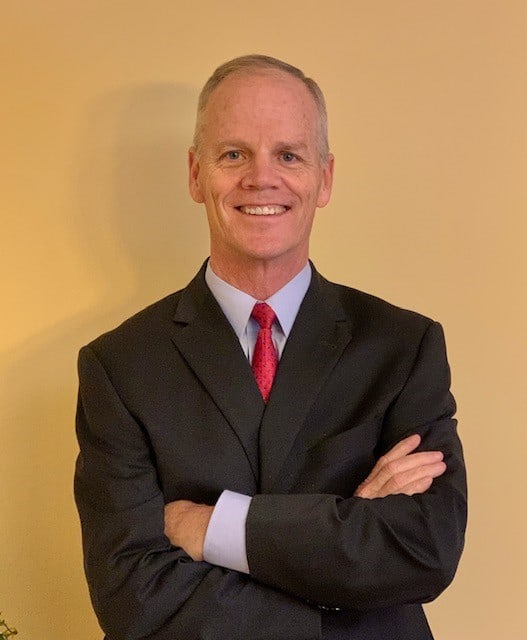Rod Forey is the principal broker and owner of William Young Real Estate LLC and William Young Properties LLC, based in Chichester, NH. With over two decades of experience, Rod Forey has established himself as a prominent figure in the real estate industry, managing a diverse portfolio of residential and commercial properties. His journey began in 2002, driven by his family’s real estate and investment background.
As a dedicated professional, Rod Forey is an active member of the Capital Board of Realtors and the National Association of Realtors. His expertise spans private investing, multi-family ownership, and new housing construction, ensuring the seamless operation of his ventures. Rod Forey’s reputation for dedication, enthusiasm, and professionalism has made him a respected figure throughout Merrimack County.
Licensed in Vermont and New Hampshire, Rod Forey’s broad geographical reach and deep market understanding allow him to effectively serve a wide range of clients. His strategic vision and hands-on approach have been instrumental in the growth and success of his real estate enterprises. Rod Forey excels in management, leadership, and communication, honed through diverse roles and years of experience.
Rod Forey’s military background in the US Coast Guard reinforces his leadership skills and disciplined work approach. Exceptional communication skills complement his ability to handle high-pressure situations and focus on achieving results. He continuously seeks ways to enhance service delivery and performance, demonstrating his commitment to growth and efficiency.
Outside his professional life, Rod Forey is passionate about hockey, serving as a Level 3 USA Hockey referee and coaching high school and women’s teams. His involvement in sports reflects his dedication to maintaining a healthy lifestyle and fostering teamwork and leadership skills. Rod Forey’s career is a testament to commitment, continuous learning, and community involvement, making him a distinguished professional in the real estate industry.
What are your most effective strategies to reduce costs in your real estate development projects?
One of my most effective strategies is adopting a long-term view during the master planning phase. This means thoroughly considering future needs and potential environmental or market changes, which helps avoid unnecessary redesign costs later on. By planning comprehensively, we ensure that the project remains adaptable and future-proof, reducing the likelihood of expensive modifications. Additionally, we focus on detailed schematics during the budgeting phase to provide a clear picture of financial requirements. This approach allows us to identify cost-saving opportunities early and allocate resources more efficiently, ultimately keeping the project within financial limits.
How do you balance cost-cutting measures with maintaining the quality and integrity of your developments?
Balancing cost-cutting with maintaining quality and integrity is crucial in real estate development. We start by aligning our design choices with budget constraints from the outset. A realistic understanding of what can be achieved within the available budget allows us to set clear financial parameters early in the design process. This ensures we make informed decisions that prevent cost overruns while maintaining the project’s quality. Additionally, we emphasize thorough and meticulous planning during the design phase to avoid costly mistakes and rework. By reviewing every aspect carefully, we ensure all elements are considered, preserving the integrity of our developments.
Can you share any innovative construction techniques or materials that have helped you lower expenses?
Using detailed schematics during the budgeting phase has been transformative in our projects. These schematics help us visualize the entire project, allowing us to identify potential cost-saving opportunities and allocate resources more efficiently. This approach prevents unforeseen expenses and keeps the project within its financial limits. We also explore innovative construction techniques, such as modular construction and using sustainable materials, which can reduce labor and material costs. Additionally, we leverage technology like Building Information Modeling (BIM) to improve accuracy and efficiency in the construction process, ultimately lowering overall expenses while maintaining high-quality standards.
How do you approach negotiations with contractors and suppliers to achieve the best prices without compromising quality?
We prioritize working with proven and trusted contractors and suppliers with a track record of delivering quality work on time and within budget. Building solid relationships with reputable contractors allows us to negotiate better pricing and more favorable terms. We approach negotiations to create win-win situations, ensuring both parties benefit. By maintaining transparency and clear communication, we foster trust and collaboration, which leads to better deals. Additionally, we leverage our network and past experiences to identify cost-saving opportunities and secure the best prices without compromising on the quality of materials or craft.
What role does technology play in your cost-reduction strategies, and which tools or software have you found most beneficial?
Technology plays a significant role in our cost-reduction strategies. We utilize tools like Building Information Modeling (BIM) to create detailed 3D models of our projects, which help us identify potential issues and optimize designs before construction begins. Project management software enables us to streamline processes, track progress, and manage resources efficiently. Additionally, construction automation and advanced analytics improve accuracy and reduce the likelihood of costly errors. Investing in technology upfront yields substantial savings over the project’s life, as it enhances efficiency, reduces waste, and ensures better coordination among all stakeholders involved in the development process.
How do you manage and control unexpected costs that arise during the development process?
Managing and controlling unexpected costs starts with meticulous planning and thorough design processes. We take the time to plan and review every aspect of the project carefully, reducing the risk of costly errors and rework. Using detailed schematics and realistic budgeting, we identify potential issues early and allocate resources efficiently. Additionally, we maintain a contingency budget to address unforeseen expenses. Regular monitoring and proactive project management allow us to stay on top of developments and make timely adjustments. Clear communication with contractors and stakeholders also helps manage expectations and mitigate the impact of unexpected costs on the overall budget.
Can you discuss any specific case studies where your cost-saving measures significantly impacted the success of a project?
In one particular project, we implemented a strategy to move quickly during construction to avoid inflationary pressures on materials and labor costs. By focusing on efficient project management and streamlined construction processes, we completed the project within budget and ahead of schedule. This approach not only saved us significant costs but also improved the overall profitability of the development. Additionally, by leveraging technology such as Building Information Modeling (BIM), we identified and resolved potential issues early in the process, further reducing costs and ensuring the project’s success. These cost-saving measures significantly impacted the project’s financial performance and overall success.
How do you ensure that your cost-cutting strategies are sustainable and do not lead to long-term issues?
Ensuring that cost-cutting strategies are sustainable and do not lead to long-term issues involves a holistic approach. We adopt a long-term view during the master planning phase, considering future needs and potential changes to avoid unnecessary redesign costs. By aligning our design choices with budget constraints, we ensure informed decision-making that prevents cost overruns while maintaining quality. Thorough and meticulous planning during the design phase helps avoid costly mistakes and rework. Additionally, we invest in technology and innovative construction techniques to enhance efficiency and reduce costs sustainably. This strategic approach ensures that our cost-cutting measures are sustainable and do not compromise the integrity of the project.
What advice would you give to new real estate developers looking to minimize their development costs?
I advise new real estate developers looking to minimize development costs to start with a comprehensive and long-term master plan. Consider future needs thoroughly to avoid unnecessary redesign costs later on. Align design choices with budget constraints to make informed decisions that prevent cost overruns. Use detailed schematics during budgeting to identify cost-saving opportunities and allocate resources efficiently. Leverage Building Information Modeling (BIM) technology and project management software to streamline processes and improve accuracy. Work with proven contractors to ensure quality and reliability. Lastly, plan and design meticulously to avoid costly errors and rework.
How do you foresee the future of cost management in real estate development, and what trends should developers be aware of?
I believe technology will heavily influence the future of cost management regarding technology and sustainable practices in real estate development. Developers should know the growing importance of Building Information Modeling (BIM) and project management software, which streamline processes, improve accuracy, and reduce errors. Sustainable construction techniques and materials will also play a significant role in reducing costs and environmental impact. Additionally, integrating smart building technologies can enhance efficiency and reduce long-term operational costs. Developers should stay informed about these trends and invest in innovative solutions to manage costs effectively while maintaining project quality and sustainability.



